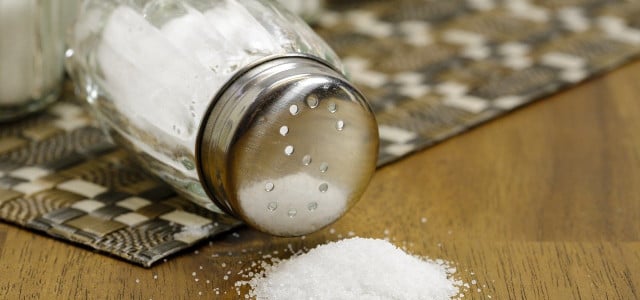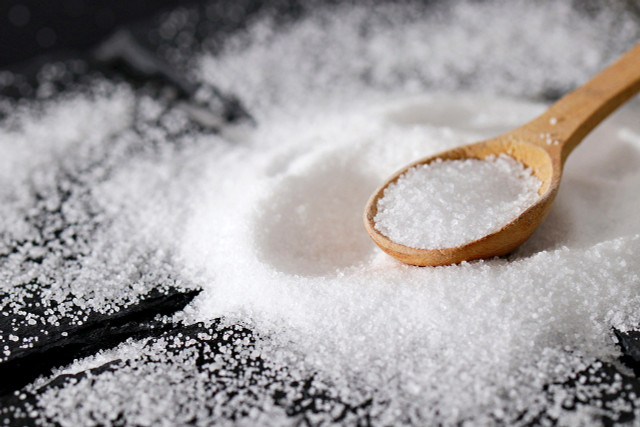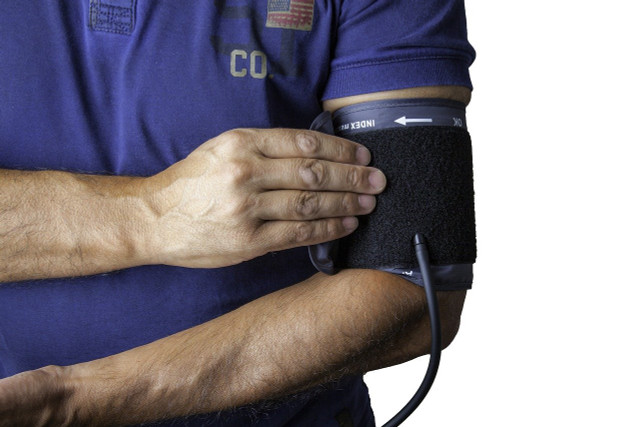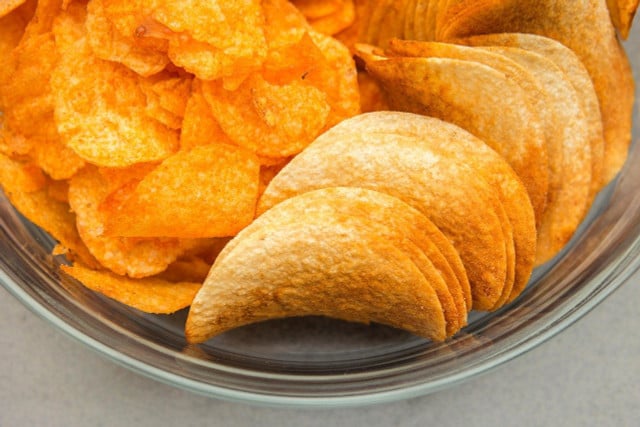
Sodium is involved in many vital processes in our body. But both too high and too low amounts can harm us in the long term. Here you can find out more about the functions and effects of the mineral.
Sodium belongs to the group of electrolytes, which means that it occurs in the body as a (positively) charged particle. We usually absorb sodium through food, especially through salt. We should not consume too much or too little.
In addition to the main source of table salt, sodium is also naturally found in other foods, such as mineral water and in moderate and low amounts in, among others:
- eggs,
- Grain,
-
legumes,
- dairy products,
- Meat and fish.
Why do we need sodium?
About half of the sodium in the body is found outside the body’s cells. About 40 to 45 percent is in the bone tissue and only a small part of five to ten percent is inside the cells. In order for the cells to function optimally, it is important that the sodium concentration between their interior and the environment is balanced. An enzyme in the cell membrane ensures this. It ensures that sodium ions are constantly moving out of the cell and potassium ions are moving in.
As a charged particle, sodium is an essential building block for building up electrical voltage on cell membranes. This is necessary in order to be able to transmit nerve impulses. It is also involved in regulating the heart rhythm and water balance, as well as the acid-base balance and in muscle work.
Sodium: excess and deficiency

(Photo: CC0 / Pixabay / mkupiec7)
The kidneys play a key role in regulating our sodium levels. If the sodium concentration is too high or too low, certain hormones are released. These cause the kidneys to excrete more or less sodium. The kidneys also retain water or excrete larger amounts in order to regulate the sodium concentration.
However, if the sodium concentration is too high or too low in the long term, this can lead to serious brain diseases.
- Too high a sodium concentration in the body can manifest itself in thirst, weakness and fever and can lead to coma.
- A sodium deficiency can manifest itself in symptoms such as nausea, headaches or confusion. If the deficiency is not treated, it can also lead to brain swelling and impaired consciousness.
However, this occurs extremely rarely and usually only when there are already illnesses or disorders that cause the sodium concentration to become unbalanced. Such illnesses include, for example, kidney diseases or hormonal disorders.
Sodium and high blood pressure

(Photo: CC0 / Pixabay / geraldoswald62)
For healthy people, a short-term sodium overdose or underdose is considered harmless, as they can usually rely on the regulatory function of the kidneys. However, in a world where heavily salted fast food, ready meals, chips, etc. are often on the menu, many people tend to consume too much sodium every day.
According to the German Nutrition Society, adults should consume about 1,500 milligrams of sodium per day. However, the DGE reports that people in Germany consume on average more than twice that amount.
According to the medical journal, such an excess of sodium often leads to an increase in blood pressure. In the long term, this can increase the risk of high blood pressure and other related cardiovascular diseases, such as arteriosclerosis and heart attack.
However, the negative impact on blood pressure is not only related to a diet rich in sodium. The medical journal cites studies that show that a lack of sodium and potassium also promotes high blood pressure. To counteract or combat high blood pressure, you should not only reduce your intake of foods rich in sodium, but also consume more potassium. You can find out more about the special features of this mineral, as well as foods that contain a lot of potassium, in this article: Potassium-rich foods: These contain particularly high amounts of it.
Note: As the Ärzteblatt reports, a sodium deficiency also increases blood pressure in the long term.
Sodium: How much is healthy

(Photo: CC0 / Pixabay / Didgeman)
The reference value for the daily sodium dose recommended by the DGE is about six grams of table salt. That’s about one teaspoon. If you eat a lot of highly salted foods, you can quickly exceed this value. Foods with a very high sodium content include, for example:
- Chips and crackers
- Bread and other savoury baked goods
- many ready meals
- Sauces
- some cheeses
- Sausage and cured meat
- Canned fish
The intake of certain medications as well as long-term fluid loss (for example through diarrhea or vomiting) also disrupt the sodium concentration and can lead to both a deficiency and an excess.
To help your body maintain a stable sodium concentration, it is best to cook for yourself. This will help you keep an eye on your salt consumption. If you want to be on the safe side, you can also weigh out three to four grams of salt and only use this amount for cooking for a day. This will give you a feel for the daily recommended amount of salt.
Read more on Techzle\.com:
- Minerals: These are the most important nutrients for your diet
- Phosphorus: requirement, deficiency, oversupply, occurrence
- Changing your diet: Important steps and how to stay disciplined
** marked with ** or orange underlined Links to sources are partly affiliate links: If you buy here, you are actively supporting Techzle\.com, because we then receive a small part of the sales proceeds. .